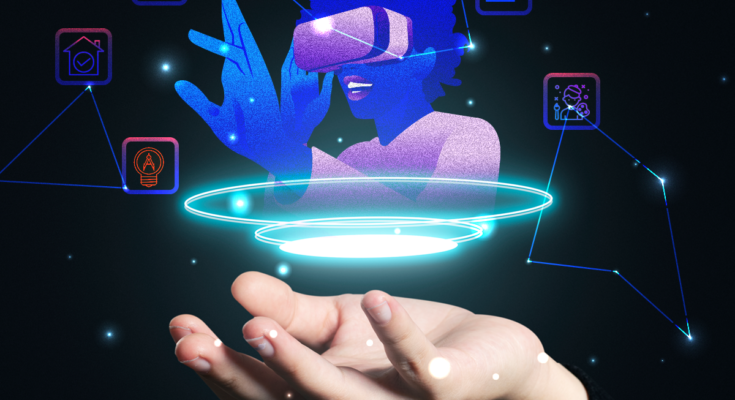The increasing emphasis on using the Internet to merge the virtual and real worlds is a significant factor in the substantial increase the global Metaverse market is predicted to experience over the forecast period. According to MRFR, the Metaverse market is expected to reach USD 105,597.5 million by 2030, growing at a CAGR of 45.2% from 2024 to 2030.
A complete metaverse—an online virtual world that combines augmented reality, virtual reality, 3D holographic avatars, video, and other types of communication—has been made possible thanks to significant developments. Customers will have access to a hyper-real, another universe to coexist in as the Metaverse grows. Indicators of the Metaverse can already be found in online gaming universes like Roblox, Fortnite, and Minecraft.
The idea of the Metaverse wasn’t particularly well-known before the pandemic. Both consumers and industries became more aware of it as a result of the pandemic. In 2020, tech companies announced they would begin developing this technology. Due to Meta’s billion-dollar investment in technology, 2021 was a successful year for Metaverse (Facebook). Industry insiders claim that the pandemic served as the catalyst for the development of the Metaverse technology and that consumers will be very interested in the post-pandemic society.
Pandemic accelerated growth of the Market
Although the outbreak hastened the adoption of the Metaverse by years, it was inevitable. There are many social, academic, and economic opportunities. Companies have relied mainly on a “will they or won’t they” mentality when picking up physical labor since the initial pandemic lockdowns in 2020. Some firms require physical employees to operate, but for those with office workers and others who can work remotely, the debate over whether it’s safe to go back to work and whether people should work full-time at all persists.
Owners of businesses assert that keeping employees in one place makes them more productive and able to work together flexibly. However, workers hold most of the cards, with labor shortages at an all-time high.
The Metaverse is a network of linked online worlds were augmented, virtual, and physical reality coexist. Users can communicate with friends, travel, work, buy goods and services, and attend events. Although many virtual worlds are available online, moving between them without losing one’s identity or possessions is impossible. This problem might be resolved in the future by fusing various internet domains into a single, seamless entity.
It has been referred as the next stage of the Internet. There is a growing need for methods to make online contact more lifelike as more individuals begin working and attending school remotely. The rise of the metaverse business is consequently driven by a growing emphasis on leveraging the Internet to merge the virtual and real worlds.
Expanding applications of VRs driving growth of the Market
However, system and data integration across entire business ecosystems may be necessary to reach their full potential. Users can communicate online, use sensor data to recreate situations instantly, clearly understand what-if scenarios, predict outcomes more accurately, and send commands to change the environment.
It can display a brand-new product’s technical specifications and dimensions, as well as all of its discrete components and their connections to the rest of the supply chain, from the design desk to the customer. It develops innovative techniques for production and gathers information to make better judgments and forecasts that could help with the automation of challenging chemical and biological processes. But the Metaverse acts as a bridge between the physical and digital worlds.
Examples of real-world uses include gaming, social networking, education, and job training. By providing wearables based on virtual reality (VR) that allow people to enter a virtual environment from the comfort at homes, the Metaverse has shown the potential to disrupt numerous sectors further. Robots and human intelligence are merging thanks to artificial intelligence.
AI will benefit the Metaverse in a variety of ways. AI technology can aid in constructing Metaverse components like characters, environments, buildings, and other assets. The Metaverse combines augmented reality, virtual reality, machine learning, blockchain technology, and artificial intelligence. With new opportunities to make purchases, communicate with loved ones, and collaborate at work, the Metaverse will ingratiate daily life in a manner that games do not.
Source:https://www.marketresearchfuture.com/reports/metaverse-market-10744
Guest Post Service By www.guestarticlehouse.com




